Best Practices for
All Employers

Best Practices for
Veterans
Questions to Ask
Resources
These suggested resources are available at no cost:

BUSINESS CASE STUDY:
SHELL OIL
ATTRIBUTES:
- Rotational experience
- Professional development (enlisted and officer)
Shell Oil has created “Career Transition Opportunity” (CTO), a unique program that aids the transition of top-performing JMOs with four-year degrees and less than six years of military or private-sector experience from the military into corporate life at Shell.
CTO combines on-the-job learning, training for recognized professional qualifications, personal development programs, and direction and support to assist JMOs with their transition. The program is high-touch and participants benefit from personal mentoring and executive-level support. Such a model practically dictates limitations on scalability. The current program is focused on military officers, and the applicability of the model to prior enlisted employees is clear, but untested in the context of GE’s experience.
Thank You to Our Corporate Partner


